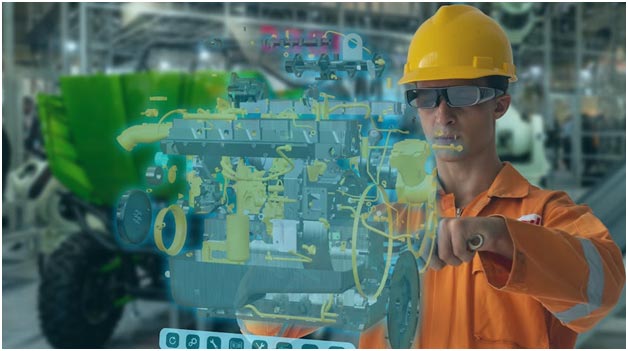Is Safety Tech Ready for Prime Time ?
As safety is a continuous journey, so is technology adoption. While there are several exciting and innovative technologies that enhance safety, there are still some bugs to be worked out.I recently talked with Joy Gaughan, lead instructional designer at GP Strategies Corp. and owner of Learning Joy, LLC, to get her take on some technology trends.
Simulation, in the form of augmented reality (AR) and virtual reality (VR), has gained notoriety for its training functionality. It’s AR, which adds digital elements to a live view, that is more widely implemented rather than VR, which replaces a real-life environment with a simulated one.
“In talking with EHS professionals who work in manufacturing companies, many are starting to use some AR on the machinery because it's an effective way for them to provide simulations on how to operate machinery, which can lower the risk for both early-stage and new employees,” says Gaughan.
Getting a feel for how things work can be applied across functions. “Crane operation is another application perfect for AR. You don’t want someone picking up a 100-ton piece of metal just to practice, right? Using a virtual space provides an excellent way to understand and feel the movements.” And AR is useful in fall protection training, too. “An employee can feel the height and practice tying off and staging,” says Gaughan.
The adoption of this technology is becoming more widespread due to dramatic decreases in cost. “It’s much more economical for a company to purchase 10 headsets, bring employees into a classroom and train everyone at the same time, thus lowering the ROI of the investment,” she says. The headsets used to be big-ticket items, she notes, making it difficult for companies to gain a reasonable ROI.
While AR is coming down in price, that isn’t the case yet with VR. The cost of production, access to equipment for extended periods of time and course development costs are still out of range for most companies.
However, both technologies will continue to show up in company training toolkits as they offer a workforce advantage: VR and AR are the preferred method of training for younger workers. Gaughan provides another example of a spray-painting simulation that doesn’t use paint. “This is a safe and an inexpensive way for 18-, 19- or 20-year-olds to learn. They aren’t exposed to some of the hazardous paints while practicing, and they learn very quickly using this method.”
Another technology that has become more sophisticated, less expensive and easily accessible is video. And using 3D cameras has really improved the quality and content. “Video production is much faster and can be used in so many ways to train on safe procedures,” notes Gaughan.
Designing the training delivered through these tools presents challenges in today’s climate. “Companies are hiring people right out of high school or community college, and many [of these young people] lack basic skill sets. So, they must be brought up to speed even before the company can make the determination if they will be successful for the job they were hired to do,” Gaughan explains. This puts additional strain on employers who, in some cases, must take a step back in their spending on these newer technologies.
Gaughan feels that despite the challenges, these technologies are clearly part of any future training and, as is true with any technology, it has to be paired with the human experience. “There needs to be a blended approach that includes the human element," she says. "You need to feel how the equipment moves and shakes and how that affects its operation. This is especially true when it comes to safety, so while a person has been through simulation and is adept, they still need supervision on the job.”



